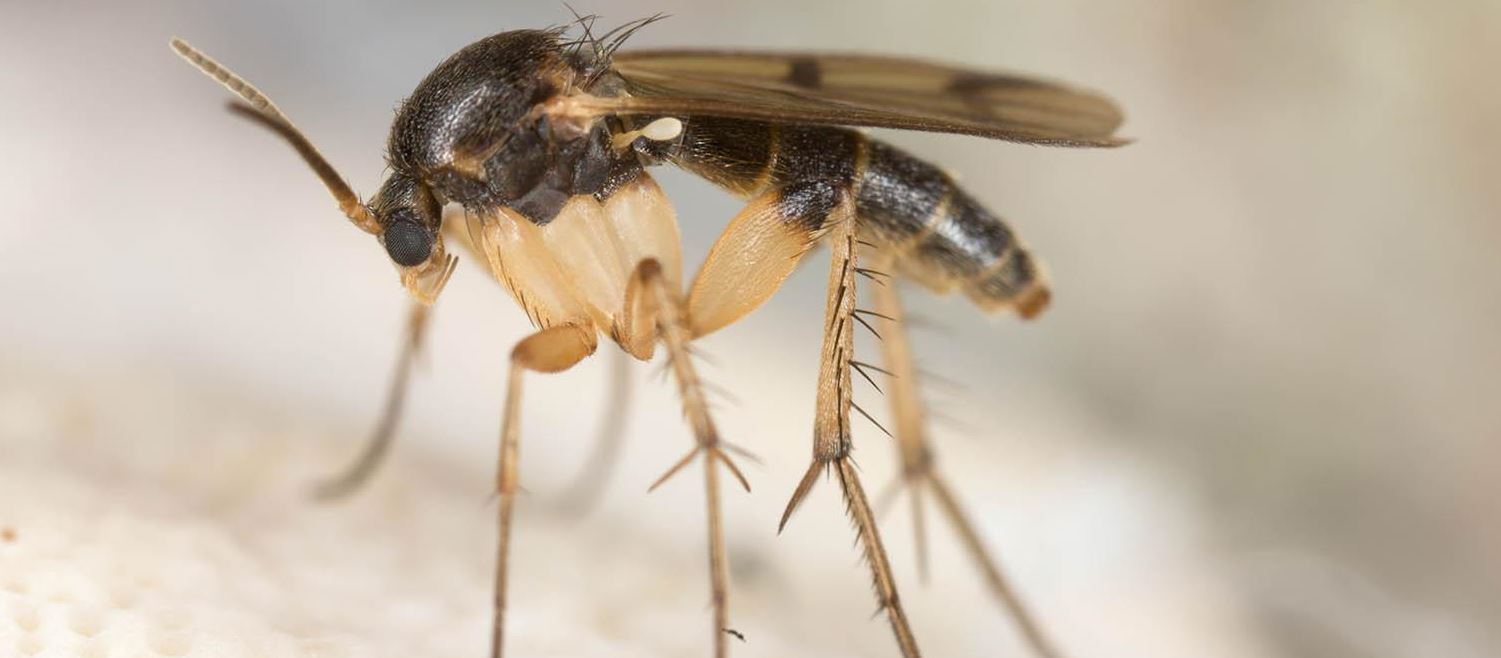Gnat Larvae: Appearance and Traits
Hear the word ‘gnats,’ and your mind immediately creates images of tiny flying critters buzzing around your home and garden.
This is only one aspect of their lifecycle. Being able to identify gnat larvae means that you can take the appropriate action to eradicate these annoying beasties. Allow us to reveal their secret and surprising lives.
Top facts about gnat larvae:
- The second stage of their lifestyle
- Eat rotting food
- Require moisture
- Live for around two weeks
What Are Gnat Larvae?
All gnats, whatever their species, follow the same lifecycle of:
- Egg
- Larvae
- Pupa
- Adult
Different family groups may differ slightly in the timescale of each stage, however, generally, the whole process takes around 40 days.
Incredibly, it’s usually as larvae that the gnats spend the most time — about two weeks. When you consider that they’re an adult for just seven to 10 days, a gnat could be seen more as a wriggling ground-based creature than a fly.
The larvae emerge from the eggs and immediately begin to feed — their food being dependent on their species. During this voracious time, they consume vast amounts of vegetable matter, fungi, manure or plants to store enough energy for the pupa stage.
The appearance, behavior and location vary among different gnat family larvae — the most common of which we’ve detailed below.
Biting Gnat Larvae — Ceratopogonidae
Location
Moisture is essential for the biting gnat larvae, hence you typically find them in:
- Sodden garden soil
- Mangrove and saltmarsh swamps
- Edges of ponds, lakes and streams
- Mud
Characteristics
The biting gnat larvae feed on small organisms within their moist homes — such as other insect eggs and periphyton. Although, in some tropical areas, they may consume rotting fruit.
These larvae have a slim, almost worm-like appearance with a heavily segmented body. White to cream in color, they have a markedly dark and pointed head. The abdomen lacks any legs, yet sometimes they may have some on the anal segment. Typically, these larvae will grow to 0.08–0.6 inches.
Fungus Gnat Larvae (Sciaridae)
Location
The larvae grow from eggs, which the adult gnats lay in moist soil around the base of plants. Most commonly, they inhabit the top inch of soil — however, heavy infestations or small areas, such as plant pots, may mean they venture to the surface.
Sometimes, you’ll see shiny tracks, akin to snail trails, on the top of affected soil, left behind by the larvae as they move across the earth.
Characteristics
Fungus gnat larvae feed on rotting vegetable matter and fungi around flora. However, they’ll also attack plant stems and root systems, leading to a sick, yellow and wilting plant.
Outdoors, they’re seasonal, appearing in the warmer months. Indoors in house plants, they can survive all-year-round.
The larvae are white, sometimes transparent, with elongated bodies. Sometimes, you can see the contents of their guts through their thin skin. They have a distinctive black head and grow to around 0.24 inches in length.
Eye Gnat Larvae — Liohippelates
Location
The adult eye gnats lay their eggs in freshly disturbed soil, especially when mixed with organic matter such as hay, grass cuttings, and moisture. Digging, plowing or even human and animal traffic is sufficient to make the ground attractive to these critters.
It’s within this earthy residence that the larvae enjoy their lives. They feed on fungi, insect eggs and decomposing plant materials.
Characteristics
On average, the eye gnat larvae are around 0.11 inches in length. You can identify these little creatures by their white color, a round posterior and a noticeably pointed anterior.
If you check the head, you’ll notice a dark mouth hook that curves downwards away from the body.
Sewer Gnats Larvae — Psychodidae
Location
The larvae of the sewer gnats live in and around drains, pipes and plugholes.
Typically, they inhabit the ‘slime’ layer, which occurs on stagnant water surfaces, such as in sinks, baths and toilet bowls — even in the drain reservoir on refrigerators. The sewer gnat larvae can also be semi-aquatic, being able to survive in standing water.
Where drains aren’t abundant, adults may lay their eggs in severely moist soil, no deeper than 1.9 inches. Being able to trap oxygen bubbles within their body, they can thrive in conditions with low O2 content.
Characteristics
The larvae are thin with a light brown to white body containing up to 11 segments.
Unlike many gnat larvae, those of the sewer gnat have a distinctly ‘furry’ appearance, a trait that continues into adulthood. They measure around 0.16-0.20 inches in length.
These little wrigglers will consume rotting organic matter — oils, fats, waste food — and bacteria. Generally speaking, the sewer gnat larvae will remain at this stage of their life cycle for 9–15 days.
Conclusion
The larval stage of gnats is possibly the most interesting phase of their lives. With an ability to survive in what we would consider unpleasant conditions, they thrive on rotting food, other creatures, decaying organic matter and slime.
The next time you see a flying gnat, just think of what this poor little creature has been through just for a few short days as an adult.

